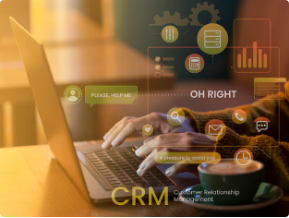cornerstone technology driving innovation, efficiency, and agility across industries. From startups to multinational corporations, organizations are harnessing the power of the cloud to streamline operations, scale infrastructure, and unlock new opportunities for growth. This article explores the role of cloud computing in enabling the digital transformation and its impact on businesses and society.
Understanding Cloud Computing
At its core, cloud computing refers to the delivery of computing services—including servers, storage, databases, networking, software, and analytics—over the internet (“the cloud”). Rather than owning and maintaining physical hardware and infrastructure, users access computing resources on-demand from cloud service providers such as Amazon Web Services (AWS), Microsoft Azure, and Google Cloud Platform (GCP). Cloud computing services are typically offered on a pay-as-you-go or subscription basis, providing flexibility and cost-effectiveness.
Key Features of Cloud Computing
Cloud computing offers several key features that differentiate it from traditional IT models:
- Scalability: Cloud services can scale up or down dynamically to accommodate changing workloads and demand spikes, enabling organizations to optimize resource utilization and cost efficiency.
- Flexibility: Cloud computing provides a range of services and deployment models, including Infrastructure as a Service (IaaS), Platform as a Service (PaaS), and Software as a Service (SaaS), tailored to diverse business needs and use cases.
- Reliability and Redundancy: Cloud providers operate multiple data centers worldwide, ensuring high availability, fault tolerance, and data redundancy to minimize downtime and data loss.
- Security: Cloud providers implement robust security measures, including data encryption, access controls, and compliance certifications, to protect sensitive information and ensure regulatory compliance.
Driving Digital Transformation
Cloud computing is a catalyst for digital transformation, enabling organizations to:
- Accelerate Innovation: By providing access to cutting-edge technologies such as artificial intelligence (AI), machine learning (ML), and Internet of Things (IoT), the cloud empowers organizations to innovate rapidly and develop new products, services, and business models.
- Enhance Agility: Cloud computing enables organizations to respond quickly to changing market conditions and customer demands by providing instant access to scalable computing resources, development tools, and collaboration platforms.
- Improve Efficiency: By offloading infrastructure management to cloud providers, organizations can focus on core business activities while reducing IT overhead, capital expenditures, and time-to-market for new initiatives.
- Enable Remote Work: The cloud facilitates remote work and collaboration by providing secure access to business applications and data from any location and device, ensuring continuity of operations and productivity in the face of disruptions.
Challenges and Considerations
While cloud computing offers numerous benefits, organizations must address several challenges and considerations, including:
- Data Security and Privacy: Organizations must implement robust security measures and compliance controls to protect sensitive data and ensure regulatory compliance, especially in highly regulated industries such as healthcare and finance.
- Vendor Lock-In: Organizations should carefully evaluate cloud providers and avoid vendor lock-in by adopting open standards, interoperable solutions, and multi-cloud strategies to mitigate risks and maintain flexibility.
- Cost Management: While cloud computing can reduce capital expenditures and provide cost savings, organizations must carefully monitor and optimize cloud spending to avoid unexpected costs and budget overruns.
- Data Governance and Sovereignty: Organizations must establish clear policies and procedures for data governance, including data ownership, access controls, and data residency requirements, especially when operating in multiple jurisdictions with varying regulations.
Future Outlook
As technology continues to evolve, the role of cloud computing in enabling the digital transformation will only grow in importance. With advancements in areas such as edge computing, serverless computing, and hybrid cloud architectures, organizations will have even greater opportunities to innovate, scale, and differentiate in an increasingly competitive landscape. By embracing cloud computing and addressing associated challenges, organizations can position themselves for success in the digital age and drive meaningful impact for their customers, employees, and stakeholders.









